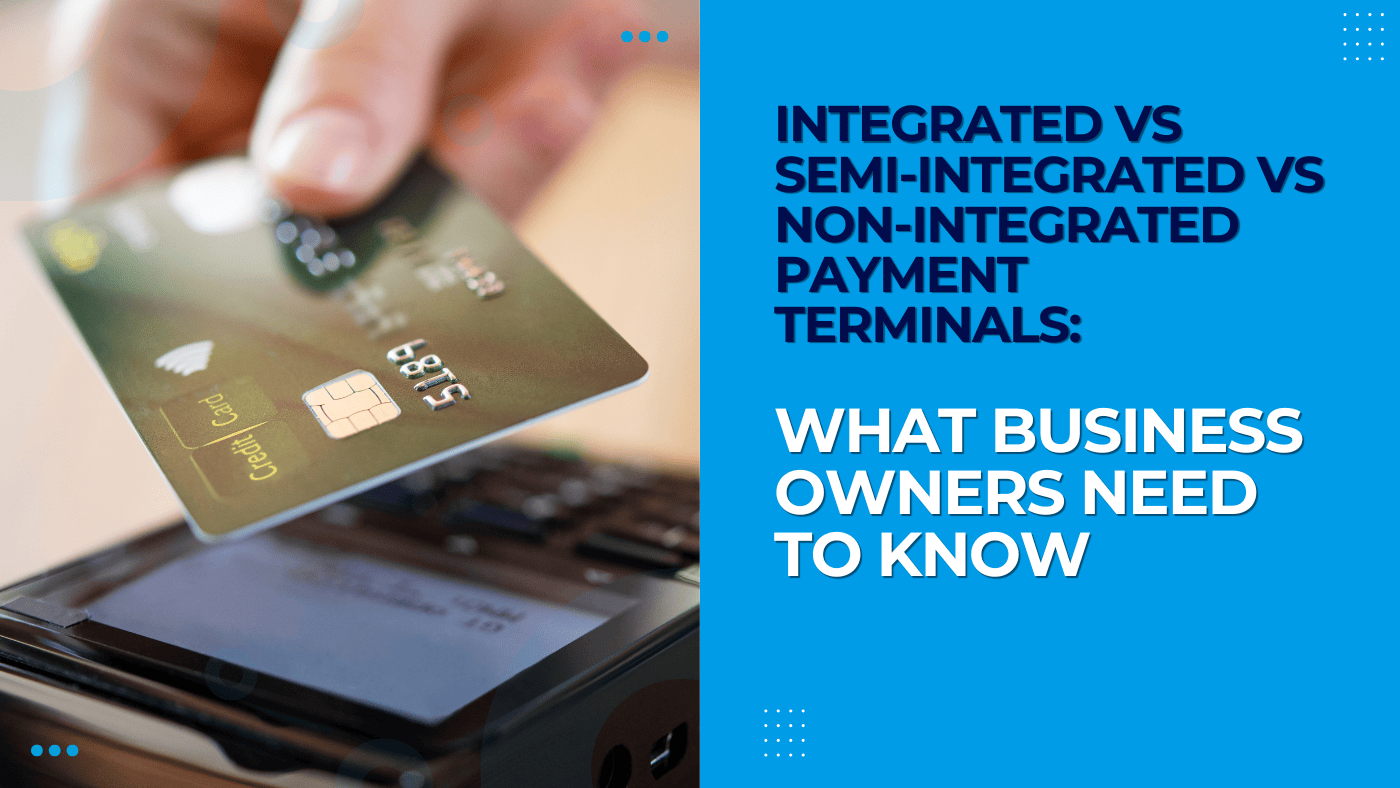
When it comes to accepting payments, the terminal you choose can dramatically affect how smoothly your business runs. At PayLo Pro, we offer a wide range of payment terminals to meet the needs of every type of merchant, whether you want full integration with your business software or a more standalone setup. Let’s break down the differences between integrated, semi-integrated, and non-integrated terminals, and how to choose the right solution for your business.
Integrated Payment Terminals
Integrated payment terminals are fully connected to your Point-of-Sale (POS) or Customer Management System (CMS), allowing payment data to flow directly from the terminal into your software. This means no double entry, fewer errors, and a streamlined checkout experience.
Integrated systems are perfect for businesses that rely on real-time transaction data across multiple departments or workstations. Restaurants, retail shops, and service-based businesses benefit from faster operations, improved accuracy, and stronger reporting.
Semi-Integrated Payment Terminals
Semi-integrated terminals offer some connectivity between your terminal and software, but not full integration. The terminal can communicate with the POS or CMS for payment processing, but data storage and recordkeeping may still happen separately.
Semi-integrated systems provide a great balance of security and functionality by keeping cardholder data off the main POS system, reducing PCI scope.
Examples of Semi-Integrated Payment Terminals Include:
Valor VL500 (touchscreen terminal with built-in dual pricing and tip adjust features)
PAX A920 with SwipeSimple (sleek, Android-based terminal with semi-integrated capabilities)
Semi-integrated solutions are great for businesses that want to modernize their payment systems without changing their core software.
Non-Integrated Payment Terminals
Non-integrated terminals operate independently from your POS or CMS. Employees must manually enter transaction amounts into the terminal and record them separately in your business system. While this method lacks automation, it still suits certain businesses, especially those in mobile or on-the-go environments.
Non-integrated terminals can introduce more room for human error, but they’re simple, affordable, and easy to deploy.
Examples of non-integrated terminals:
SwipeSimple B250 (compact EMV reader for mobile use)
Dejavoo QD2 (standalone Wi-Fi terminal with tip options)
Non-integrated setups are ideal for contractors, mobile service providers, or businesses just getting started that need a simple way to take payments.
| Fully- Integrated | Semi-Integrated | Non-Integrated | |
| POS Requirements | The POS and terminal function as a single unit, allowing for seamless two-way synchronization between them. | The POS system provides one-way communication to the physical terminal. | A POS system isn’t required to process payments—only a physical terminal and internet access are needed. *Note: If you choose to use a POS system, it must be purchased separately. |
| Payment Processing Rate | Card-present rate (the processing fee charged when a customer physically presents their card at the time of payment—typically via swipe, dip, or tap—using a terminal or POS system. These rates are generally lower than card-not-present rates due to the reduced risk of fraud.) | Card-present rate. | Card-present rate. |
| Initiating Transactions | Transactions can be initiated from either the POS system or the payment terminal. | Transactions can be initiated in the POS system and sent to the semi-integrated payment terminal for customer completion. | Transactions can only be initiated directly from the payment terminal. |
| Access to Data and Reports | Gain access to real-time transaction data and detailed reporting—all from a single, centralized platform. | Access real-time reporting by transmitting transaction data directly to the terminal. | Real-time reporting is not available. Reports are limited to customer details, transaction dates, and totals, with access restricted to the most recent batch and same-day settlement data. |
Seamless Industry Integrations with PayLo Pro
No matter which terminal you choose, PayLo Pro makes it easy to connect your payment system with your industry-specific software. We integrate with many of the leading Customer Management Systems in:
Healthcare (dental, medical, chiropractic)
Automotive (repair shops, dealerships, detailing)
Personal Services (salons, spas, wellness studios)
Home Services (HVAC, plumbing, landscaping)
Our team ensures your payment solution works seamlessly within your business environment so you can stay focused on serving customers, not chasing down receipts.
Dual Pricing That Works With Any Setup
No matter which type of terminal or integration setup your business uses, you can still take advantage of PayLo Pro's powerful dual pricing solution. Whether you're fully integrated, semi-integrated, or completely non-integrated, dual pricing is built to work with your existing system—helping you offset credit card processing fees and keep more revenue in your business.
Unlike other providers that limit savings to certain setups, PayLo Pro ensures that every business—regardless of size or complexity—can save money without changing how they operate.
Final Thoughts
Final Thoughts
Whether you run a busy clinic, a growing salon, or a home repair service, the right payment terminal can save you time, reduce errors, and give your customers a smoother checkout experience. At PayLo Pro, we help you choose the best-fit solution—from fully integrated systems to portable non-integrated devices—while keeping your costs low with dual pricing built into every terminal.
Reach out today to find out which solution fits your workflow best!





